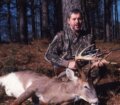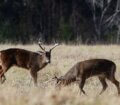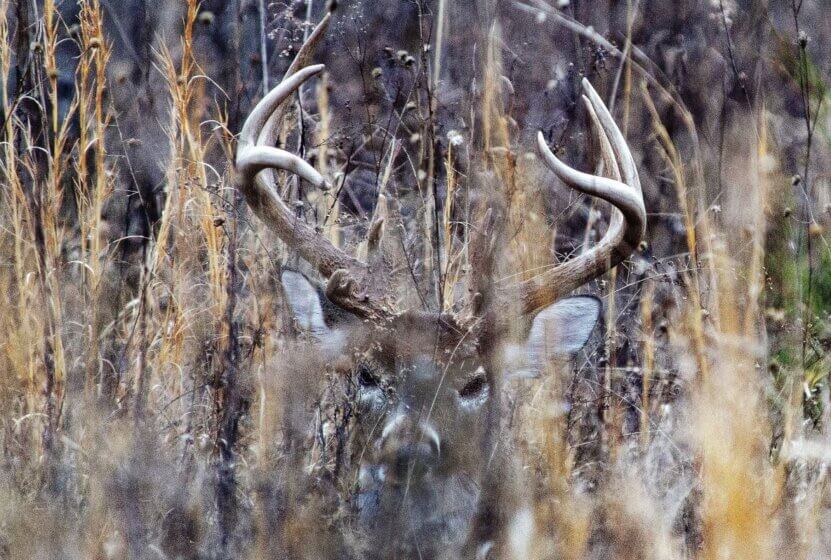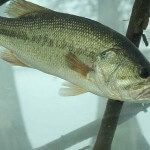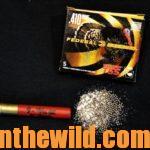Editor’s Note: Dr. Robert Sheppard of Tuscaloosa Alabama, who has taught schools about bowhunting for deer, hunting with blackpowder for deer and rifle hunting for deer, averages hunting white-tailed deer more than 40 days each year. Because of Sheppard’s medical training, he studies the sport of deer hunting with a researcher’s eye year-round and often sees overlooked details most deer hunters miss, which can make the difference in a successful and an unsuccessful hunt.

The more you look at deer tracks, and the harder you search for tracks, the better you’ll be able to interpret what the deer are doing when they’ve made the tracks. So far, we’ve found the buck at his primary food source, which we have designated as a field. We’ve backtracked him through what we’ve called a staging area where several deer crossings meet and is where he seems to wait for the cover of darkness to enter the field – all notes you’ve marked in your apps, GPS or journals.
Now we have to go even further into the woods and find the holding area where the deer stay during daylight hours when the hunting pressure is intense, which is the most-difficult pattern to try and interpret. But if you can, follow a deer track, and find some type of thick cover – a briar thicket, a pine thicket, a cut-over field or some kind of heavy foliage where the deer have plenty of cover to hide in during daylight hours. Then you will have located a region to scout for your end-of-the-season deer hunting.

Scouting thickets is much like the scouting you’ve done in the beginning of the season when you’ve scouted the fields. Just because you find tracks coming into a thicket or leaving a thicket doesn’t mean you have enough information to set-up a tree stand or a ground blind to try and take a deer at that particular point.
Instead, walk all the way around the thicket. Find tracks that are going both into and out of the thicket at the same place. If the thicket is large enough, and more than one deer is utilizing this cover during daylight hours, you may be able to find several places on the edge of the thicket where the tracks go both into and out of the thicket.
Place a tree stand there, or designate a tree or a ground blind site for a stand. Take your compass out, and determine which way your stand must be facing, and which way you will have to approach that stand with a favorable wind. Then you can plan your hunt, decide which stand you’ll hunt out of, according to wind direction on the morning of your hunt that you’ve learned and put that information in your app, GPS and/or journal.
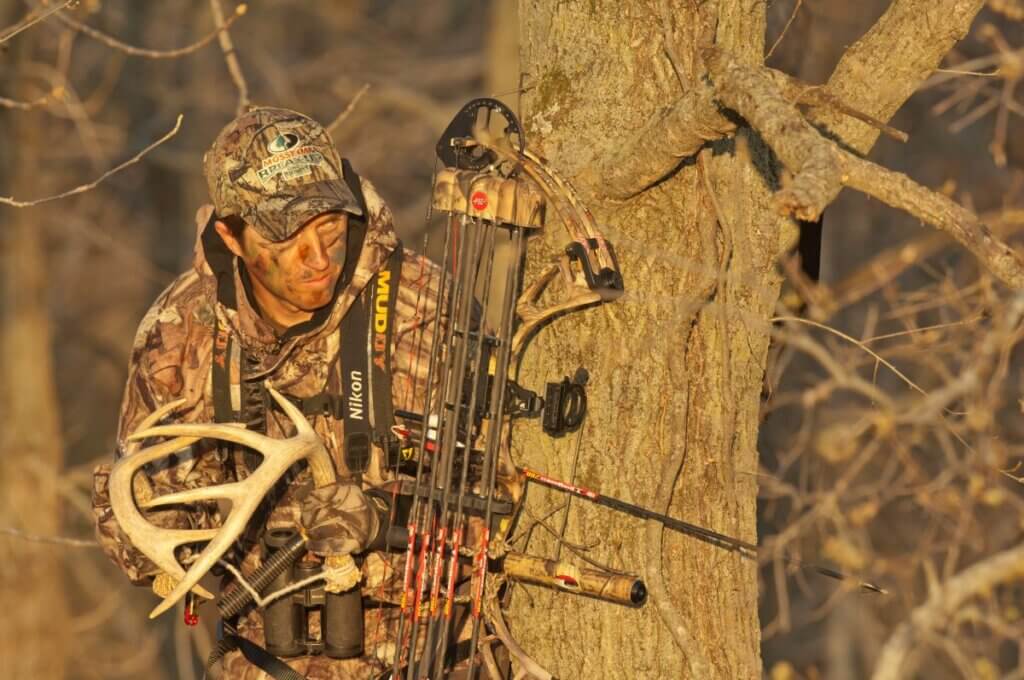
The advantage to these stands is you can catch your deer in the mornings coming from the food source and going into the thicket or in the middle of the day if they’ve been spooked by another hunter coming into the thicket. These late-season thicket patterns may be your best, all-day hunting. All of these patterns work well during bow season and in areas during gun season with little or no hunter pressure.
At the end of the season, strict attention must be paid to every detail. The deer are alerted and looking for danger. Although the wind is a key factor for keeping the hunter’s scent out of his hunting area, equally as important is the sportsman’s approach to the stand.
When gun season is happening, I take a rake into the woods with me and rake a path from my tree stand back 150 yards toward where I enter the woods. Then on the day I hunt, I can walk to my stand without making any noise on the morning I plan to hunt. Whereas I normally take 15 minutes to get to my stand, during the first part of the season, I may spend an hour covering the same distance to reach my stand in the late part of the season to keep from spooking the deer.
I also try and use permanent stands or ladder stands in the late season. Then I’ll make little or no noise when I climb into my tree stand. The most-difficult deer to pattern and to hunt is a deer that has spent all season long learning what hunters do and when they do it.
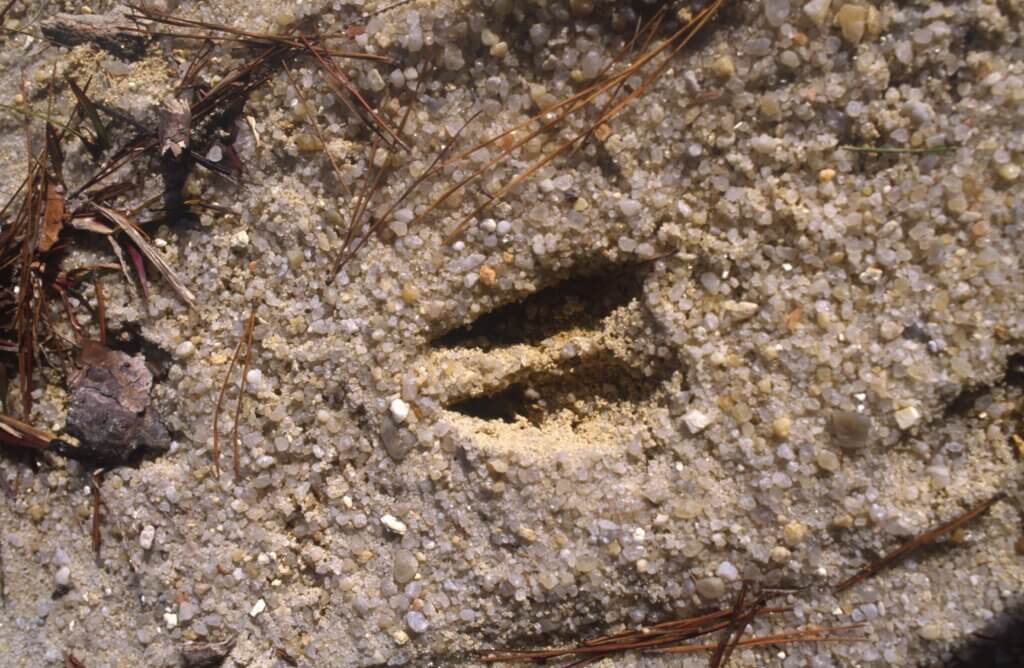
By investing more time scouting and studying deer and their movement patterns and learning where they feed, where they wait to feed, and where they hold when hunting pressure is intense, you’ll be better able to predict at what point in the woods to place your tree stand or ground blind for an effective ambush. If you spend more time learning about deer than you do hunting, then you’ll take more deer than even those who hunt the most.
When you use the links below to go to Amazon, notice on the left of the Audible option where Amazon says you can hear a sample that gives you 10% of these books for free! On the right side of the page for each book and below the offer for a free Audible trial, you can choose to Buy the Audible book.
Be sure to also check out John’s Free Books as our gift to you!
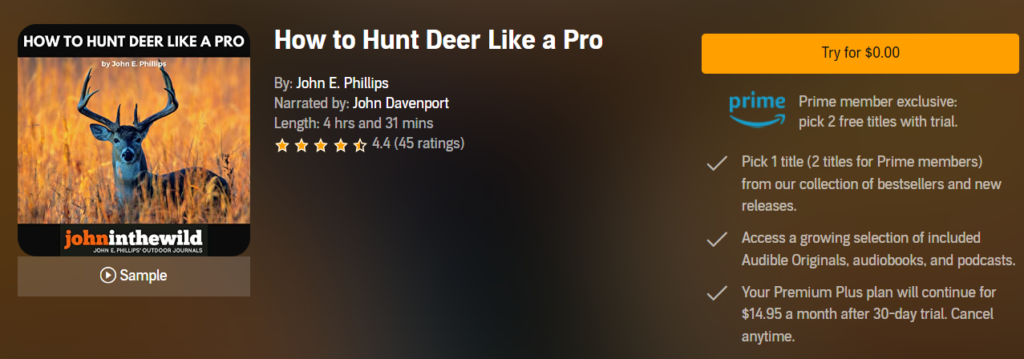
Prime Members: You’re eligible to claim 2 free titles with your 30-day Audible Premium Plus trial! Browse more than 100 of John E. Phillips’ expert guidebooks on hunting and fishing here.
Books By Topic
Category Shortcuts: View on Amazon
| Deer Hunting | Turkey Hunting | Elk Hunting | Bass Fishing |
| Mule Deer Hunting | Bowhunting | Bowfishing | Crappie Fishing |
| All Cookbooks | Hunting Cookbooks | Fishing Cookbooks | All Audible Books |

How to Hunt and Take Big Buck Deer on Small Properties
In this book, you’ll hear from 14 hunters who either have gained permission or leased properties as small as six acres to as much as 250 acres, and how they consistently take older-age-class bucks off these little lands.
VERSIONS: AUDIBLE, KINDLE & PRINT

Jim Crumley’s Secrets of Bowhunting Deer
Using a black magic marker and a gray work jumpsuit, Jim Crumley of Buchanan, Virginia, drastically changed the nature and purpose of hunting camouflage when he created the first sportsman’s camouflage – Trebark. Crumley’s love of bowhunting and his desire to be more invisible changed hunting clothing forever.
In this hunting guide, he shares the wisdom that he’s learned throughout his lifetime about how to be a hunter, how to find a deer lease, how to scout for deer, and more.
Special features include how to:
- Have a magic 60 acres to hunt
- Decide the best equipment to use
- Find deer year-round
- Locate land to hunt
- Know the best place to put your tree stand
- Get bucks within bow range
VERSIONS: AUDIBLE, KINDLE & PRINT

How to Hunt Deer Like a Pro
How do you know if the land you hunt has a trophy deer on it? Wildlife manager Bob Zaiglin, of Uvalde, Texas and Jim Crumley, the father of modern-day hunting camouflage, tells you how to find out. GPS can make finding and taking that trophy buck easier. This hunting guide will teach you how to hunt big bucks where no one else can find them, how to call deer, and how to become versatile as a deer hunter, so that if one deer tactic doesn’t work, another one will.
In the chapter, “How to find Bucks at Scrape,” Dr. Keith Causey, retired professor of Wildlife Science at Auburn University, describes the best way to hunt a scrape.
Brad Harrison of Neosho, Missouri, is a nationally-known videographer, professional deer hunter and master at calling deer. Another master is Will Primos of Primos Game Calls. These two experts will tell the best deer calls and when to use them in this book.
And for over 20 years, Bo Pitman, lodge manager of White Oak Plantation, has been studying deer movement patterns. He explains what types of conditions are best for predicting deer movement.
VERSIONS: AUDIBLE, KINDLE & PRINT

Deer hunting and deer hunters are drastically changing each year. To learn new techniques for hunting deer and have more places to hunt, I’ve interviewed some of the best deer hunters in the nation and share their tactics in How to Hunt Deer Like a Pro: Volume II.
In Chapter 10, Jacob Lamar tells you his tactics for consistently taking older-age-class bucks on public lands in several states. Chapter 11, Bob Walker explains how to find places on public lands where you can hunt that 99 percent of the other hunters never have considered hunting. The Bonus Chapter with David Ramey tells you how, where, when and with what equipment to take big Kansas bucks on public lands by hunting in 100-degree weather when others won’t hunt.
Chapter 13, Mark Drury, his family and his guests take mature bucks every season by having more small places to hunt rather than one large property. Drury explains the strategy of having satellite farms to hunt that only may be 50-150 acres each or less. Chapter 15, Pat Reeve, who hunts far-northern states and Canada, says, “I don’t like hunting for mature bucks until the weather is 20 degrees or less.” Chapter 4, Dr. Larry Marchinton says that funnels are the most-reliable stand sites to hunt for big bucks and tells why.
VERSIONS: AUDIBLE & PRINT

